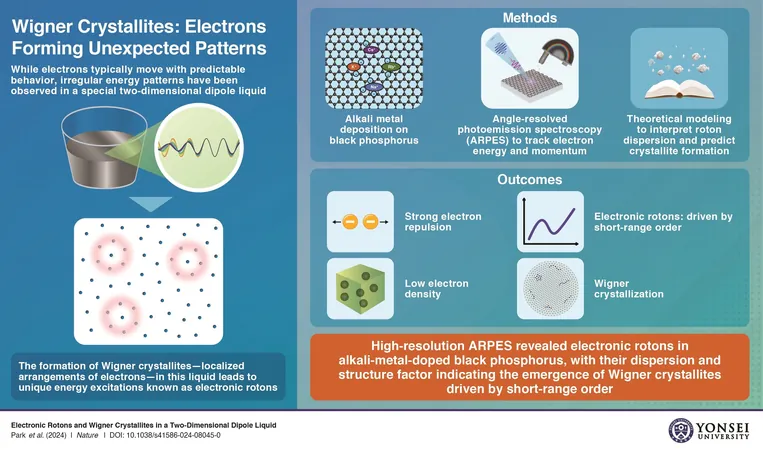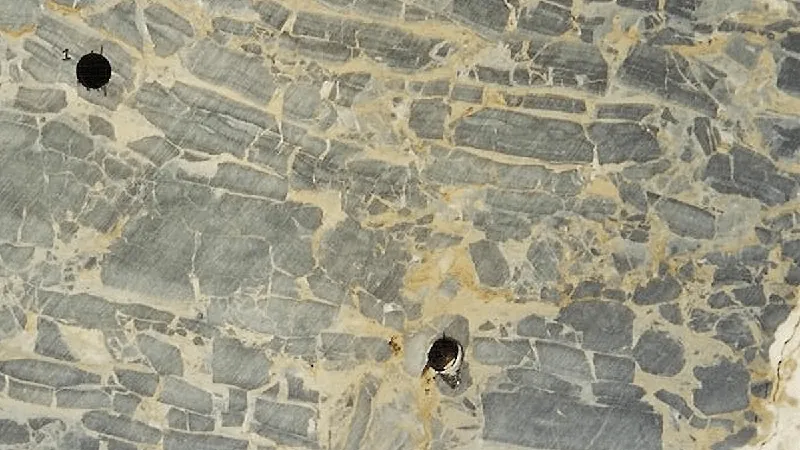
Groundbreaking Discovery of Electronic Rotons Offers Glimpse into Wigner Crystallization in Two-Dimensional Electron Liquids
2025-03-26
Author: Yu
Groundbreaking Discovery
In an astonishing leap for the field of quantum materials, researchers at Yonsei University have offered unprecedented insights into the behavior of electrons, revealing the formation of Wigner crystallites and the elusive phenomenon of electronic rotons. These findings, published in the renowned journal *Nature*, could have transformative implications for future technologies.
Theoretical Background
For decades, scientists have been intrigued by how electrons interact in quantum systems. In certain conditions, rather than moving independently, they engage in complex interactions that foster exotic quantum states. One such state, theorized by Nobel laureate Eugene Wigner, is the Wigner crystal—a defined lattice structure of electrons arising from their mutual repulsion. While the concept has existed for years, tangible experimental evidence has been sparse—until now.
Experimental Methodology
Utilizing advanced angle-resolved photoemission spectroscopy (ARPES), Prof. Keun Su Kim and his team meticulously analyzed black phosphorus doped with alkali metals. Their research unveiled aperiodic energy variations, a significant indicator of electronic rotons, confirming the presence of Wigner crystallization. As they manipulated the density of dopants within the material, the energy gap associated with these rotons diminished to zero, marking a crucial transition from fluid-like behavior to a structured lattice of electrons.
Insights from the Research
"While it is established that electrons can behave as waves in solids, Wigner's theory suggests that at low densities, their strong repulsion can imprison them in a crystal formation. Our findings illuminate the existence of these Wigner crystals by detecting distinctive aperiodic signals in our ARPES data," explained Prof. Kim, the lead researcher on the study.
Key Findings
The irregular energy patterns observed indicated a peculiar dip at a specific momentum, signifying the presence of electronic rotons. Using structure factor analysis, the research team confirmed that the electrons within the material exhibited a short-range order, pivotal for the formation of Wigner crystals. As the Wigner crystal formed, electrons became more evenly spaced, suggesting the emergence of tiny, organized electron clusters—reminiscent of mini-crystals.
Future Implications
This breakthrough advances our understanding of strongly correlated systems, which play a crucial role in phenomena like high-temperature superconductivity and superfluidity. "Mastering high-temperature superconductivity could revolutionize our daily lives," Prof. Kim states. "From completely eliminating overheating in devices to significantly reducing energy transmission losses, the possibilities are enormous. We could also witness drastic changes in transportation, like affordable magnetic levitation trains."
Conclusion
The significance of this study extends well beyond mere academic interest. By deepening our comprehension of quantum materials, this research brings us one step closer to realizing room-temperature superconductors—an innovation poised to reshape energy, electronics, and transportation sectors profoundly. As the world anticipates these technological advancements, we stand at the brink of a new era in quantum physics that could redefine the ordinary workings of our daily lives. Stay tuned as we continue to uncover the mysteries of the quantum realm and its potential to change how we live, work, and travel!


 Brasil (PT)
Brasil (PT)
 Canada (EN)
Canada (EN)
 Chile (ES)
Chile (ES)
 Česko (CS)
Česko (CS)
 대한민국 (KO)
대한민국 (KO)
 España (ES)
España (ES)
 France (FR)
France (FR)
 Hong Kong (EN)
Hong Kong (EN)
 Italia (IT)
Italia (IT)
 日本 (JA)
日本 (JA)
 Magyarország (HU)
Magyarország (HU)
 Norge (NO)
Norge (NO)
 Polska (PL)
Polska (PL)
 Schweiz (DE)
Schweiz (DE)
 Singapore (EN)
Singapore (EN)
 Sverige (SV)
Sverige (SV)
 Suomi (FI)
Suomi (FI)
 Türkiye (TR)
Türkiye (TR)
 الإمارات العربية المتحدة (AR)
الإمارات العربية المتحدة (AR)